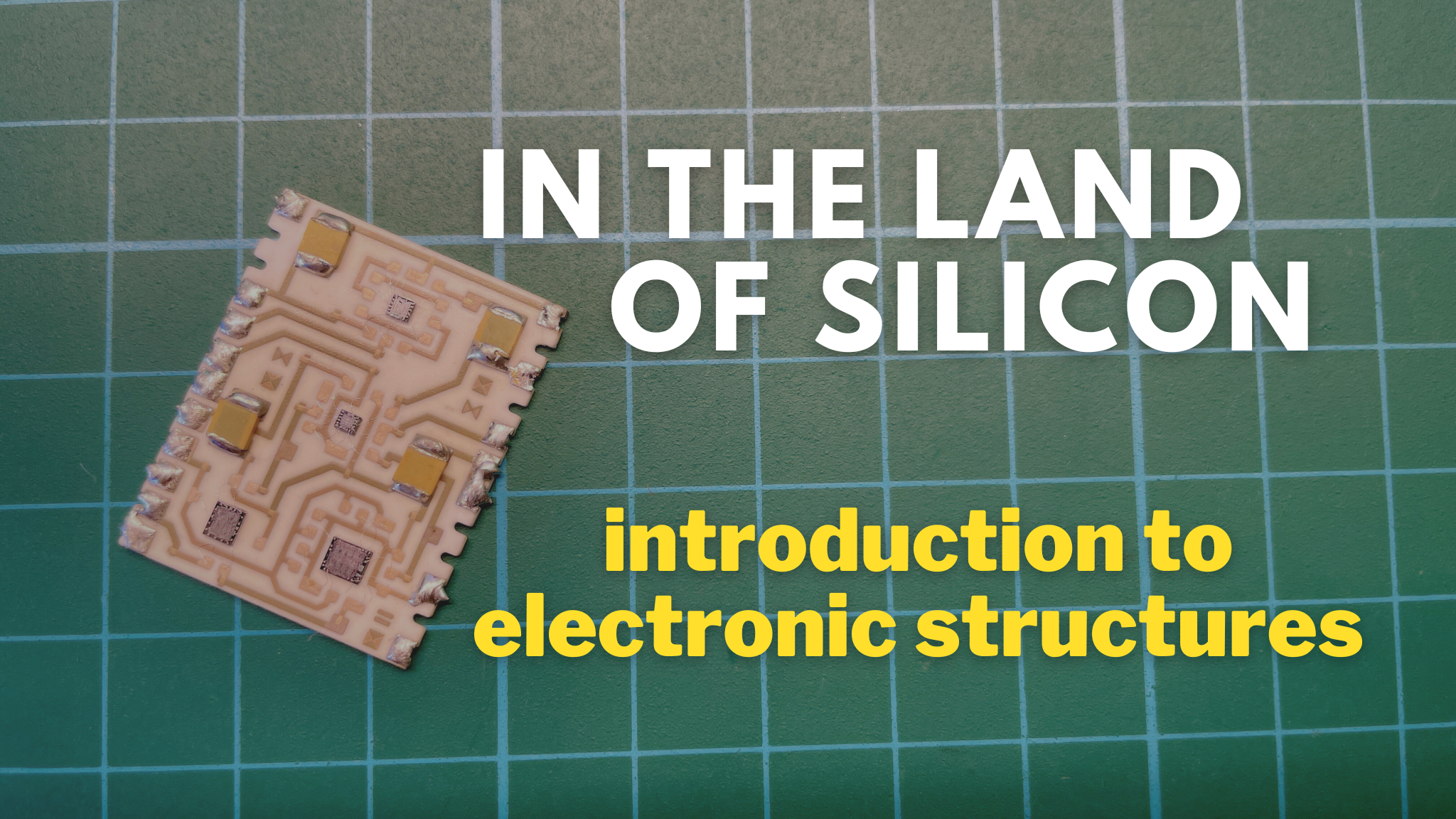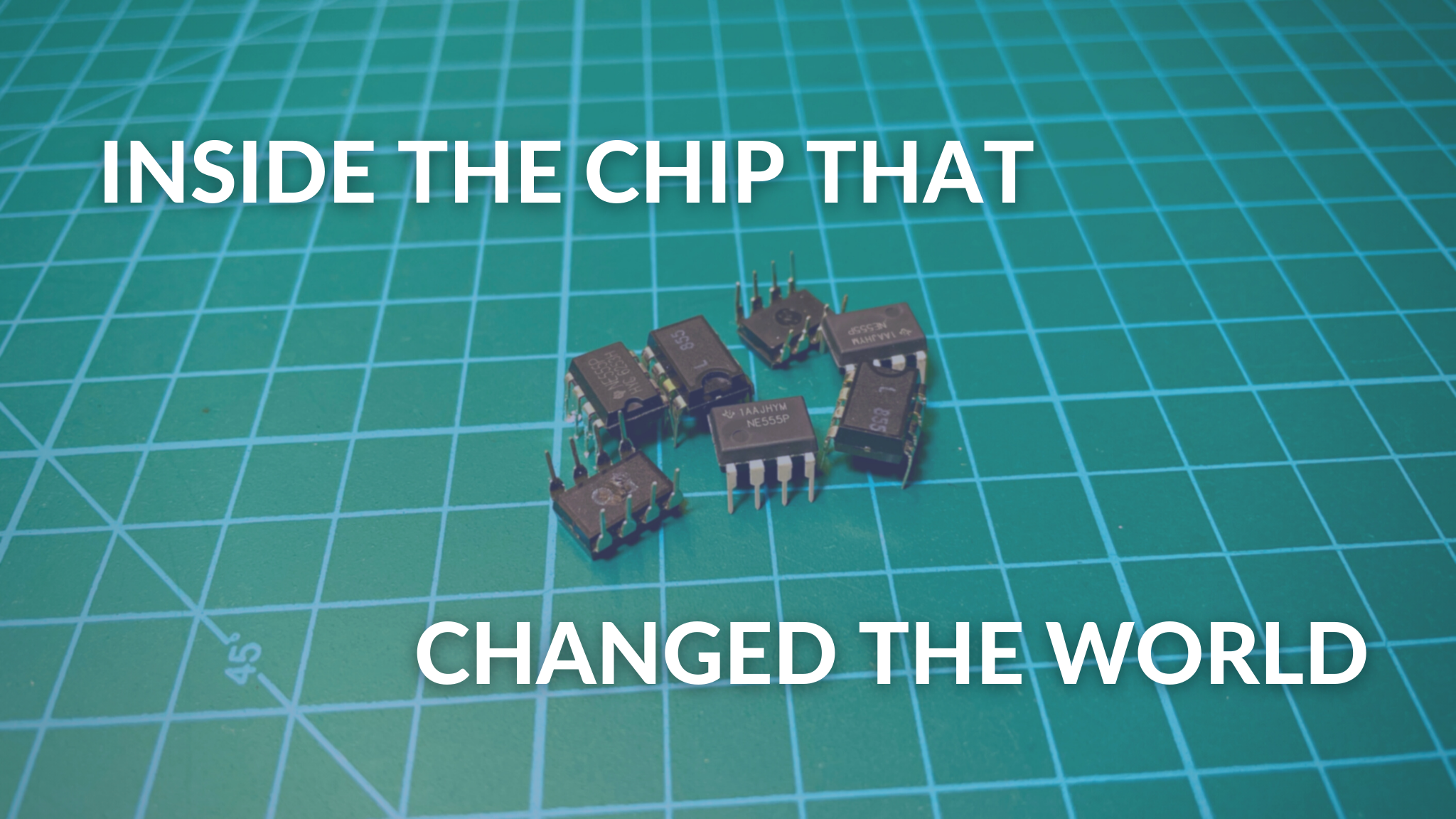In today’s dynamic world of electronics, we are constantly using advanced technologies that enable us to perform tasks faster, more efficiently and more conveniently. One of the most remarkable developments that has affected our daily reality is the invention of the integrated circuit. These small but powerful electronic components, typically containing hundreds, thousands or even millions of elements on a single silicon wafer. Chips have revolutionized our world in ways we could not even imagine before. But in order to explore the history of integrated circuits, we need to go all the way back to the 1920s, to the days of tube designs.
What are integrated circuits?
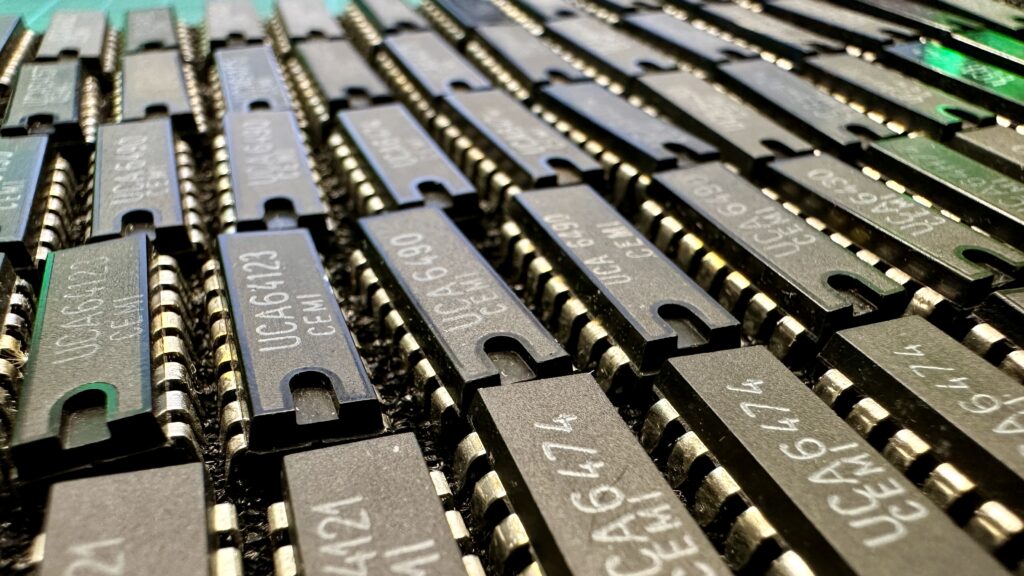
We primarily associate integrated circuits as small electronic components with many leads. They are usually rectangular in shape and black in color, but there are also more fancy forms. An integrated circuit, also known as a chip, is nothing more than a circuit integrated into the form of a single element, consisting mostly of transistors. In the past, designers and engineers combined into a single chip, usually just a few elements placed on a small silicon core. Nowadays, chips consist of millions or even billions of transistors. The emergence of integrated circuits was one of the milestones in the world of technology, thanks to them it was possible to achieve unprecedented degrees of miniaturization of electronics.
The first was... a lamp
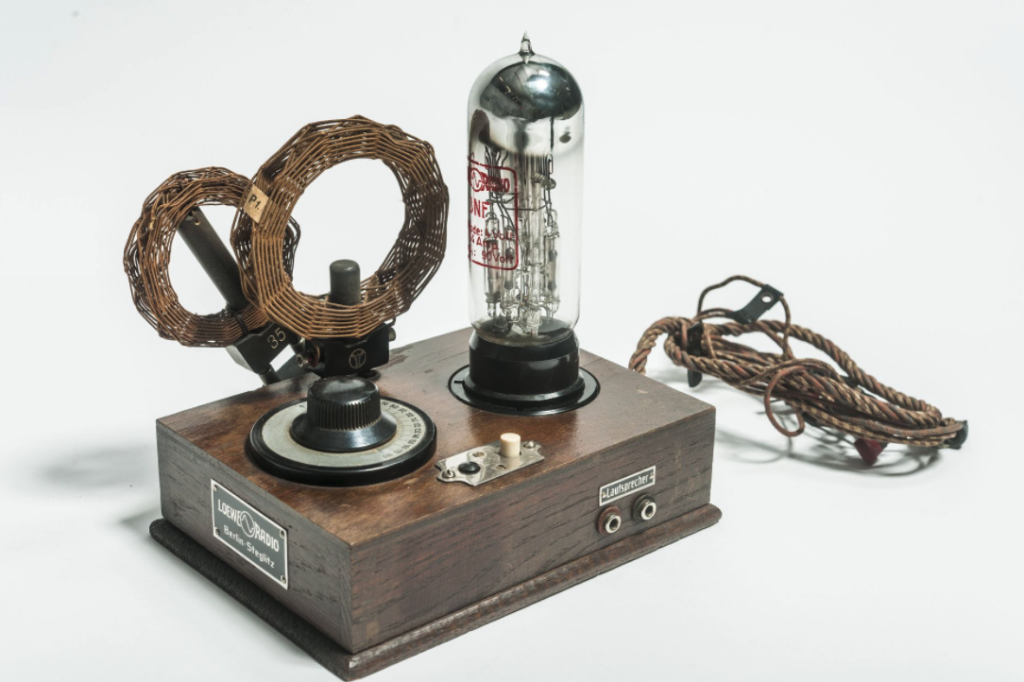
Although it seems strange we can consider the electron tube as the first integrated circuit. The progressive miniaturization of electronics is not at all the domain of recent years, practically from the beginning of the emergence of this field developers have tried to simplify and integrate electronic circuits. The first successful attempt to integrate several functions into a single electronic device was the creation of the Loewe 3NF vacuum tube. This design was created in 1926 at the German company Loewe AG and combined three triodes inside, along with several resistors and capacitors. This type of lamp was almost a functional radio, just needing to add a battery, tuning coil and speaker. Interestingly, the tube was developed, among other things, to circumvent German tax regulations. At the time, there was a fee depending on the number of tube stands. Only one tube was placed in the Loewe product which was both a technological and financial advantage.
The seed of innovation, or the rise of the transistor
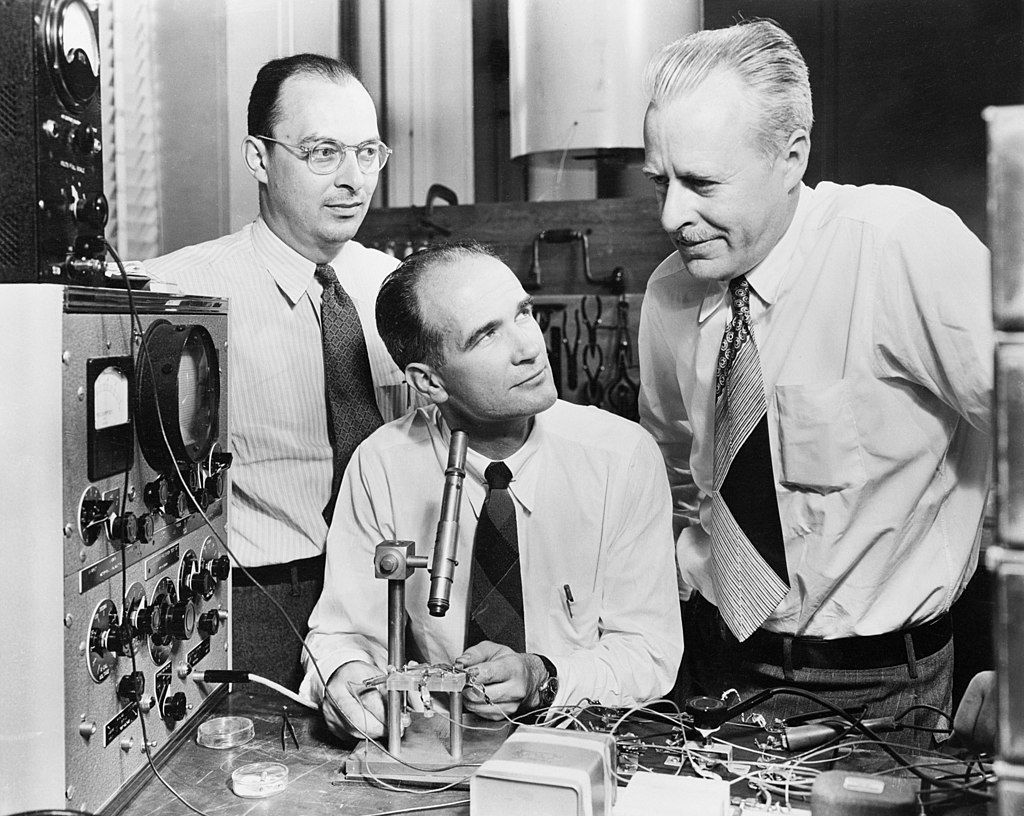
Today’s integrated circuits wouldn’t exist if it weren’t for the rise of the transistor, so it’s worth taking a moment to look at it. The first transistor was developed by a team from Bell Labs – John Bardeen, William Shockley and Walter Brattain in 1947. Although the first mentions of a semiconductor element capable of controlling current flow appear as early as the 1920s. Those designs, however, never got beyond the planning stage.

The first transistor, which today we refer to as a point transistor, was built from a germanium plate to which a gold foil was attached, which was then cut into two parts. In this way, a working gold-germanium-gold structure was obtained.
Following suit, scientists in 1951 show the world a slightly more refined design – the junction transistor. It was built from three layers of germanium-based semiconductor. However, this element had one disadvantage – temperature. The germanium transistors were failing after reaching about 75°C. This problem was solved in 1954 by Gordon Teala, working at Texas Instruments, who developed a silicon-based transistor.
After the invention of the silicon transistor, history accelerates, more variations and types of semiconductor elements are created, eventually leading to another revolution, the creation of the integrated circuit.
What if you were to combine everything?
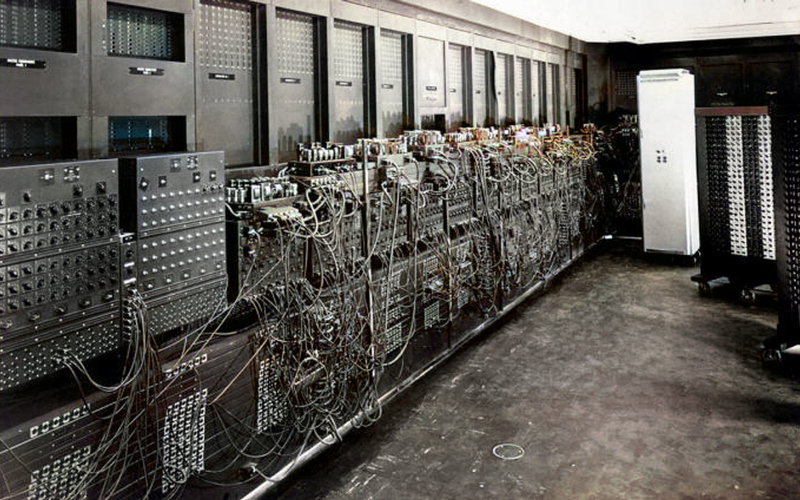
With solid-state transistors at their disposal, electronics designers were able to build truly remarkable devices, but despite the enormous possibilities, there was still the problem of scale. Engineers realized that at some point semiconductor-based designs would grow to skyrocket, just like tube equipment. Besides, the reliability of transistors was questioned, and everyone was well aware of the problems of that time with the ENIAC computer, built with 18,000 vacuum tubes. The glass bulbs failed almost daily, causing the ENIAC to operate for about half of its time. It was feared that transistor designs, would face the same problem in the future. However, it is worth mentioning that part of the technical community at that time already predicted that in the near future it would be possible to combine several transistors into one larger element, even though the technology to build a structure of this type did not yet exist.
The breakthrough comes in May 1958. At that time, radio engineer and World War II veteran Jack Kilby starts work at Texas Instruments. He was then given a choice – to deal with the topic of “general” miniaturization of electronics or to produce circuits for military applications. Jack chose the first option. Not long after, on August 28 of the same year, he presented his first prototype integrated circuit.
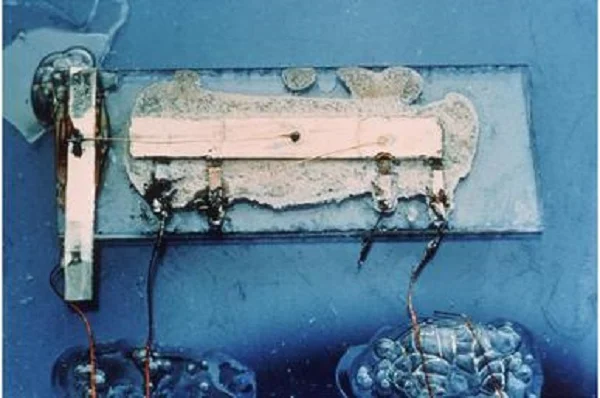
Kilby’s prototype was a simple oscillator composed of two transistors, but they were not placed on the same piece of semiconductor. This meant that the design was a hybrid circuit with two separate germanium transistors connected by gold wires. The chip did not solve the problems of isolation, it was still not possible to build semiconductor structures on the same substrate. For monolithic integrated circuits, that is, those based on a single piece of semiconductor, we will have to wait a little longer.
Innovation paths - hybrid systems
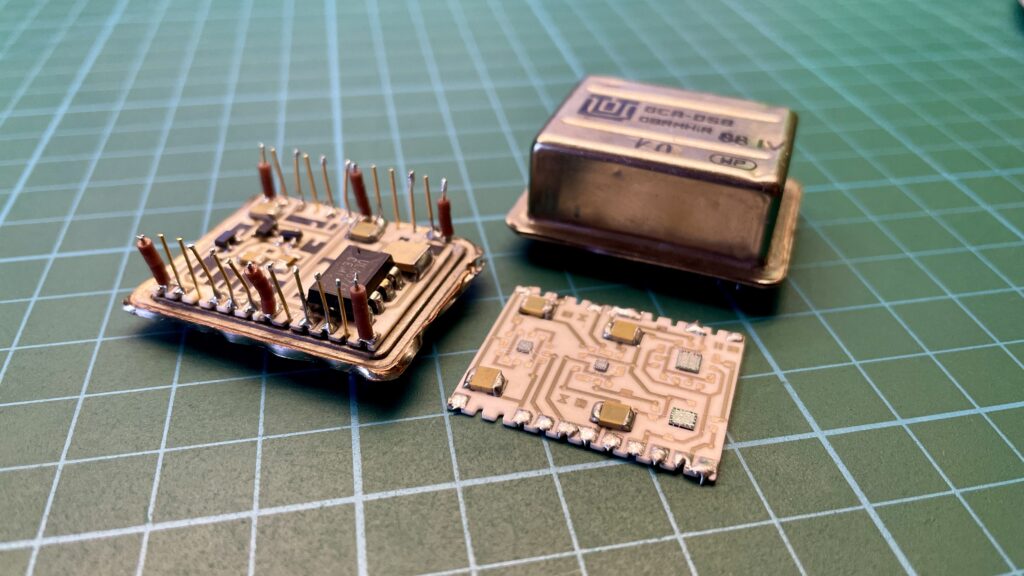
The Kilby oscillator became the basis for the later development of hybrid integrated circuits. Designers of such structures inside the chip usually combined several larger electronic components together with “pure” semiconductor cores. You can see an example of such a hybrid above. This is the GCA-058 chip produced in 1988 by the Cracow Microelectronics and Resistors Research and Development Center for the People’s Army of Poland. Inside, capacitors, transistors, a single operational amplifier, carbon resistors and silicon cores created at the Institute of Electron Technology were placed on stacked ceramic bases.
In the 1960s and 1970s, with advances in semiconductor technology, the first monolithic integrated circuits began to emerge, which, compared to hybrid designs, were smaller, more reliable and cheaper to manufacture. Even so, hybrid circuits continued to be used in specialized applications that required high power, thermal performance or tolerance to extreme conditions. Hybrids remained popular in aerospace, military, medical and some industrial applications.
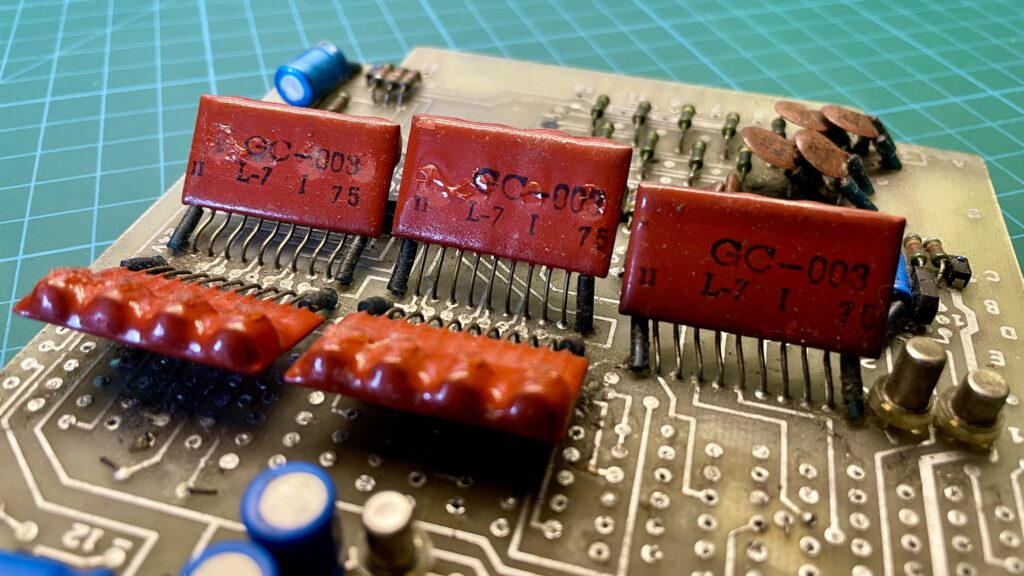
With the development of technology and the advent of advanced manufacturing processes, hybrid circuits began to give way to integrated circuits in most applications. However, there are still areas today where hybrid circuits are still the preferred solution due to their unique features and adaptability to specific technical requirements.
Today’s hybrid circuits are often used in high-temperature, high-power, high-voltage applications, special sensors, protection and various specialized devices where traditional ICs may not be sufficient.
The integrated circuit as we know it
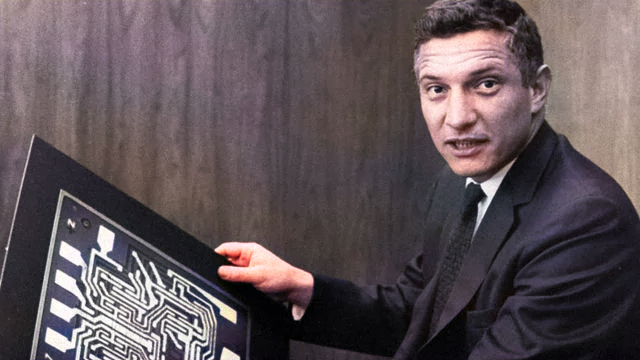
The integrated circuits known today are monolithic designs, meaning that the entire electronic circuit consisting of transistors, diodes, resistors and sometimes even capacitors is placed on a single piece of silicon, in other words, on a common substrate. The man who succeeded in creating something like this was Robert Noyce, working at Fairchild Semiconductor. In August 1959, Robert forms a special group inside Fairchild to develop the integrated circuit. The first prototypes, like Jack Kilby’s chip, are hybrid designs in which transistors are placed on separate semiconductor substrates.
A technological milestone turns out to be the second prototype, presented to the world a year later in September 1960. At that time, technicians used Noyce’s proposed isolation of transistors in special “wells” surrounded by a p-n junction, so the components could be placed on a single piece of silicon. This is how the first monolithic integrated circuit of four transistors and five resistors is created.

Initially, the silicon cores produced by the plenum process, which I will tell more about in a subsequent material, were placed in circular metal housings with leads placed at the bottom. The semiconductor structure was placed inside and connected to the leads using thin wires attached to the surface by ultrasound.
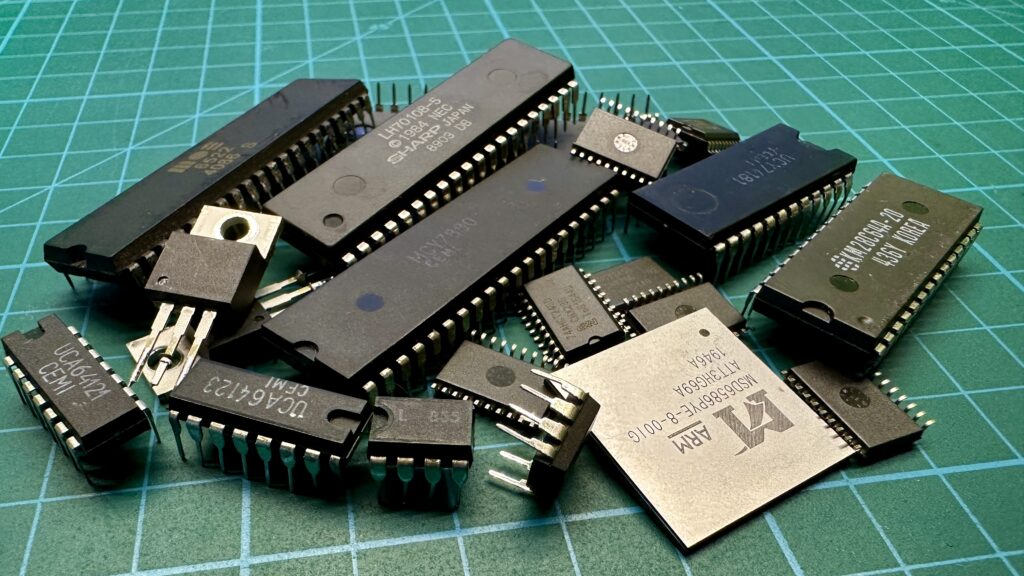
Today’s integrated circuits are housed in a wide variety of housing types with different mounting methods. We can find board-mounted designs in both a through-hole and surface-mount manner. Today it is difficult to imagine the world without chips, which form a key foundation for countless aspects of our daily lives. If you want to learn more about integrated circuits take a look at our other microelectronics articles.
The modern world is constantly flowing toward the future, driven by incredible advances in technology. Central to this dynamic process is the electronics that underpin most everyday devices. One of the key foundations of electronics are structures called integrated circuits, which have been revolutionizing our ability to process information and communicate for years. However, when we look deep into electronic chips, we see that they are made up of structures such as transistors, diodes, resistors and even capacitors. These elements are placed together, on a single piece of silicon, which makes them significantly different from similar structures placed on printed circuit boards. In this article I will tell you a little about silicon electronic structures, the foundation of today's technological world.
Anyone who starts playing with electronics sooner or later encounters on his way the chip numbered 555. According to many, this timer is one of the chips that changed the world. It is hard to disagree with this especially considering the scale of production and the multitude of applications, about which even separate books have been written. In this material I will tell you a little about this unique chip.
Sources:
- https://forbot.pl/blog/uklad-scalony-czym-jest-i-jak-powstaje-czym-sa-czipy-id52503
- https://www.meteca.org/the-history-of-the-first-microchip/
- https://manufacturingdigital.com/procurement-and-supply-chain/a-microchip-timeline-from-1959-to-the-supply-chain-shortage
- http://www.animatedexplanations.com/who-invented-silicon-chip/
- https://en.wikipedia.org/wiki/Jack_Kilby
- https://patents.google.com/patent/US3138743
- https://en.wikipedia.org/wiki/Integrated_circuit
- https://en.wikipedia.org/wiki/Hybrid_integrated_circuit
- https://en.wikipedia.org/wiki/Invention_of_the_integrated_circuit
- https://pl.wikipedia.org/wiki/Loewe_3NF
- https://en.wikipedia.org/wiki/ENIAC
- https://www.allaboutcircuits.com/news/jack-kilby-and-the-world-first-integrated-circuit/
- https://pl.wikipedia.org/wiki/Robert_Noyce
- P. Horowitz, W. Hill, “The Art of Electronics,” vol. 1-2, WKŁ Publishing House, Warsaw 1996.
- A. Dobrowolski, Z. Jachna, E. Majda, M. Wierzbowski, “Electronics butż to bardzo proste”, BTC Publishing House, Legionowo 2013.
- A. Golda, A. Kos, “Design of CMOS integrated circuits,” WKŁ Publishing House, Warszewa 2010.

